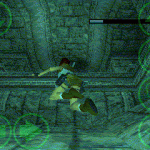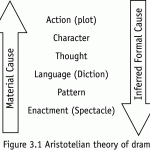2004
Cyberpractitioner Diane Gromala celebrates virtual immersion's unsteady body-knowledge.
J. Yellowlees Douglas adds more titles to Eskelinen's catalog of limnal games.
U.S. cybernetic pragmatisim and practical Net expertise interest Moulthrop (and his auditors) on "second thought."
Literature scholars eager to understand gaming have made early inroads. Markku Eskelinen sets up serious checkpoints.
Chris Crawford adduces the algorithms of games against dramatic conventions.
Espen Aarseth holds that gameplay, not Lara Croft?s physique, should command the attention of an evolving game studies.
"Where is the text in chess?" asks Espen Aarseth. Rules, play, and semiosis are the (un)common ground between games and stories in "interactive narrativism" and the art of simulation.
Stuart Moulthrop (re)mediates the interpretation (narrativists) vs. configuration (ludologists) debate by going macropolitical.
Sidebar images, "From Work to Play: Molecular Culture in the Time of Deadly Games."
Sidebar images from "Genre Trouble: Narrativism and the Art of Simulation."
Sidebar images, "From Work to Play: Molecular Culture in the Time of Deadly Games."
Pat Harrigan and Noah Wardrip-Fruin introduce First Person, an interactive, multi-player collaboration between ebr and the MIT Press.
Animals and invaders populate the space of Janet Murray's counter-response.
Insisting on the centrality of character (in literature no less than gaming) Ken Perlin responds to Victoria Vesna and Will Wright.
Narrativists vs. ludologists, material vs. formal constraints: Michael Mateas replies by identifying actors' roles in each division.
The builder of Façade, an "interactive story world," Michael Mateas offers both a poetics and a neo-Aristotelian project (for interactive drama and games).
Illustrating Perlin's "Can There Be a Form between a Game and a Story?"
Ken Perlin on a game-narrative difference that makes a difference: does agency, rather than identifiction, make characters in a game seem more real than those in novels or films?
The importance of consequences plots Brenda Laurel's response to Michael Mateas.
Bryan Loyall cites expertly paced penguins in this response to Janet Murray.



